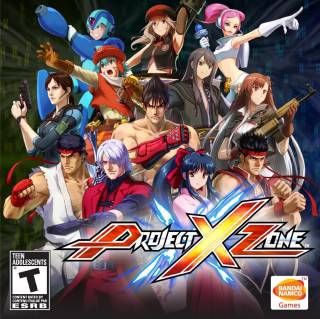Project X Zone is fantastic to watch. However, actually playing it is a more ambiguous experience.
Video games are a special medium. They offer unique types of experiences that other media have far more trouble encapsulating. However, the road goes both ways. Because of how video games operate, something that might work in another medium may not work in video games. Take Project X Zone, for instance. Its pixel art aesthetic looks amazing, and the high number of colorful characters should, in theory, form an enjoyable experience. And they do, as long as you ignore Project X Zone as a video game. This is not to say that the game plays poorly, but rather that Project X Zone does not provide ample reason to play the game. It feels like the game is occupying your time rather than engaging it, and when the game’s appeal becomes apparent, it might be too late.
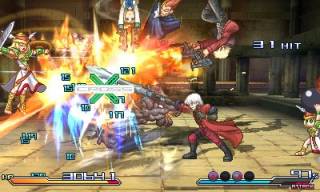
Yet this should not diminish Project X Zone’s other accomplishments. After all, the game still looks absolutely amazing, even from the beginning. A showy animated introduction sequence announces itself and shows off a wide range of characters in crisp, carefully animated glory. But the true graphical appeal lies in the game itself. While the game renders backgrounds in 3D, it represents all the characters with 2D pixel art evocative of older fighting games.
This was a very deliberate choice on the developers’ parts. Despite a limited amount of animation, each character can perform a large amount of feats, from powerful slashes and impacts to daintily keeping enemies suspended in the air. The action strikes a perfect balance between exciting chaos and deliberate control that makes watching the game an enjoyable activity in its own right. There’s a sense of spectacle to what’s happening on screen, and surprisingly, it never gets old. The flashy special attacks will look just as good at the beginning of the game as they will at the end. The music is pretty good, too. It covers many moods, from the understated tone that follows Kite to the peppy, youthful tone of Tron Bonne’s leitmotif. Each piece does a good job of priming you for battle and they all complement the visuals rather nicely.
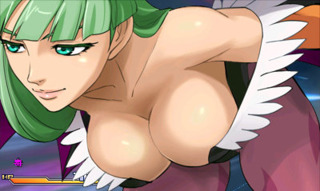
Of course, Project X Zone’s characters contribute just as much to the game’s success as does its aesthetic. Unfortunately, the plot that joins these characters together is admittedly weak. The story begins with all its characters embarking on different quests. Chun Li is tracking criminals aboard a ship at sea, Dante is hunting demons for pay, and Tekken and Virtua Fighter characters are quelling trouble in Japan. Soon, though, their paths (and several others’) cross as their worlds begin to merge. It is up to them to figure out why the worlds are merging and how to stop it.
Sadly, this does not happen for some time. Even as the cast grows larger, nobody takes any real action toward solving the mystery at hand. Instead, they merely go with the flow. The plot jumps between worlds and events quite rapidly, forgetting to develop on any one event or integrating it into the overarching story. Even toward its end, the story only barely develops an overarching plot. The story feels underdeveloped, as though the writers simply did not know what to do with the solid idea of combining video game franchises. If Project X Zone is to have a chance at success, then it is best viewed in terms of its individual parts, not as a cohesive whole.
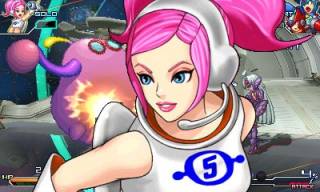
This is because a more episodic view of the story gives the characters more room to shine. I do not mean that the characters themselves are weak. Far from it; they are the story’s greatest strength. The writing borrows widely from many different video game franchises, like the (once) popular Mega Man to the decidedly more obscure Yumeria. Thus, the story has a broad pool of personalities to select from to create entertaining scenarios, which is exactly what it does. Characters like the openly evil Devilotte or the somewhat serious Mega Man characters X and Zero interact well together. Their personalities play well off each other and they all sustain the narrative with their humorous antics. It also helps that many of the characters are perfectly aware of just how stupid some of the scenarios can be, and that they have no issues voicing their opinion on the matter. Overall, the cast’s many amusing interactions are more than enough to keep you entertained over the course of the experience.
Yet for all its strengths thus far, Project X Zone still fails to justify itself as a video game. This is in spite of the fact that it has all the ingredients needed for a captivating game. Although it plays like a strategy RPG in the vein of Final Fantasy Tactics, that comparison sells the game short. True, you move around a collection of units around an isometric map, carefully monitoring everybody’s location, their health, their time to move, etc. However, the comparison falls apart when two characters begin fighting each other. Now Project X Zone is more reminiscent of a fighting game. Your characters have a limited set of moves they can use in a single round, and figuring out how these moves work together is the key to victory. In fact, there are a lot of complex systems to comprehend while playing Project X Zone. Some take more figuring out than others (I personally had trouble understanding the XP system for special moves). Still, complexity ultimately works in the game’s favor. After all, the systems’ depth and complexity invites learning on your part. Over 40 hours of gameplay, this learning should be enough to keep you sufficiently engaged.
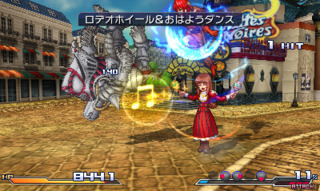
Unfortunately, there may not be any decent motivation to learn these systems, as the game lacks challenge. Most enemies never pose much of a threat; they come at you in manageable numbers and you can often dispose of them in a single round of attacks. While the later chapters populate enemies more densely, this does not create a greater difficulty. The result is a relatively flat difficulty curve that’s more damaging to the overall experience than it might initially seem. Without anything pushing against you, there is no motivation to explore the various systems that make up the game. After all, why learn how all these systems function when your initial understanding of them works just as well? Under these circumstances, the interactive portions feel like a waste of time. This does not reflect well on Project X Zone’s overall quality when those portions constitute at least half the experience.
Of course, challenge might be the wrong way to appreciate Project X Zone. Instead, it might be best to examine it in terms of efficiency. After all, the most important systems encourage efficient play above all else. Your characters become stronger faster if you maintain higher combos in battle; you deal more damage (and maintain higher combos) by finding out when to strike enemies to deal the most damage; and you finish chapters far more quickly when you figure out how best to use your special attacks. Granted, failing to learn these systems does not affect your ability to complete the challenges the game sets before you (at least in the “win/lose” sense). However, the game rewards efficient play with an appropriate sense of accomplishment, as clearing chapters quickly connotes a greater sense of power and control over the situation. Thus, efficiency provides the kind of motivation for learning the game’s various systems that challenge could not hope to match.
In the end, though, Project X Zone’s quality is hard to determine, as any one component will contradict another. The lack of challenge cancels out the game’s appeal to efficiency, and the strongly defined characters negate the mediocre plot holding them together. (In both of these examples, the inverse is equally true.) Only the game’s graphics manage to escape this predicament. Nothing about the game invalidates the masterfully crafted spectacle they offer. Ultimately, an absolute “yes or no” recommendation for Project X Zone is near impossible. Depending on what you value in a game, this game’s quality can change drastically. All I can offer is information.
